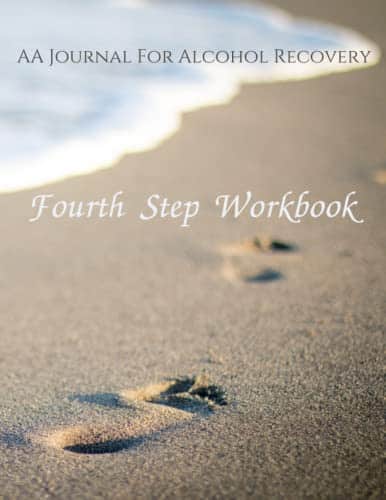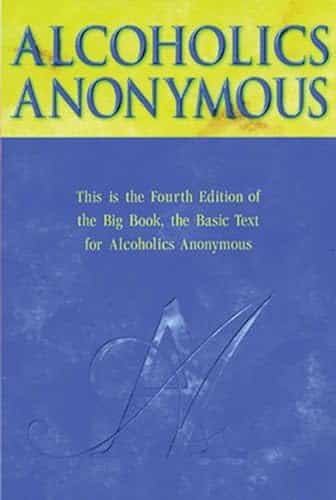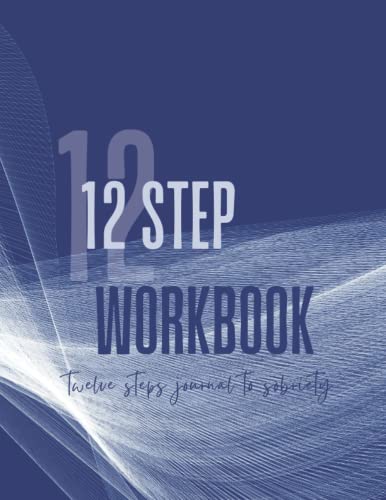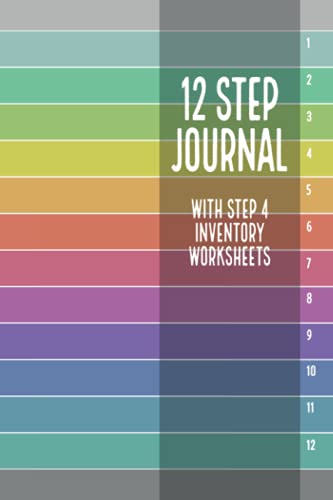In the quest for healing and recovery, there comes a moment of profound transformation, often experienced upon reaching the AA Fourth Step. This pivotal stage in the 12-Step Program demands a “searching and fearless moral inventory” of oneself—a call that shakes the very foundation of one’s existence. Yet the fruits borne from this courageous introspection offer a redemptive passage towards lasting sobriety and personal growth. Let’s delve into the stirring realities unearthed through this step—a journey not just for those in recovery, but as a beacon of hope for their families, particularly the heartstrong mothers championing the fight against addiction.
Navigating AA Step 4: The Journey to Self-Discovery
For those entangled in the web of addiction, AA Step 4 arrives as a gateway to self-discovery. The souls brave enough to traverse this path may not realize the treasury of wisdom that awaits them, wisdom that can rebuild lives and fortify broken bonds.
Fourth Step Workbook AA Journal For Alcohol Recovery AA Journal For Alcohol

$11.98
The “Fourth Step Workbook AA Journal For Alcohol Recovery” is a transformative tool designed to support individuals on their journey to sobriety through the Alcoholics Anonymous program. This structured workbook focuses on the pivotal fourth step of the AA process, which involves a fearless moral inventory of oneself. It provides a private, reflective space for users to candidly document their thoughts, feelings, and experiences related to their past behaviors and the impact of alcohol on their lives. With guided prompts and supportive quotes, the journal helps individuals navigate the complex emotions and relationships that are often revisited during recovery.
Crafted to be both user-friendly and profound in its approach, the journal encourages deep self-reflection and personal growth. Each page is arranged to facilitate an organized exploration of personal history, patterns of behavior, and the root causes of addiction. The workbook’s layout includes ample space for writing, ensuring that users can express themselves freely and without constraint. By breaking down the fourth step into manageable sections, this journal helps users systematically confront and address the hardships and mistakes of their past.
In the spirit of the AA tradition, the “Fourth Step Workbook AA Journal For Alcohol Recovery” serves as a companion for those seeking healing and renewal. Its durable design ensures that it can be revisited time and time again, providing a physical testament to the user’s progress and dedication to recovery. The journal is not only a practical tool for those actively engaged in the fourth step but also a keepsake that can offer encouragement and insight throughout the lifelong journey of sobriety. With each day’s entry, users can reaffirm their commitment to sobriety and build a stronger foundation for a healthier, alcohol-free future.
1. The Power of Honesty in the AA Fourth Step
Right off the bat, let’s face it – honesty is a tough customer. Telling it like it is, especially when the reflection in the mirror isn’t as shiny as we’d like, demands raw courage. But this brutal truth-telling is what the AA Fourth Step is all about. It’s more than a call for transparency; it’s an invitation to dive headfirst into the trenches of our hearts, exposing every nook and cranny that’s been shrouded in the darkness of denial. And let me tell you – the freedom that arises from this act is nothing short of a rebirth.

2. Uncovering Hidden Resentments Through AA Step 4
Resentment festers like an invisible wound, seeping venom into life’s bloodstream, and as AA starkly addresses, it’s a formidable enemy capable of decimating the spirit of those ensnared in addiction. These hidden grudges, often masked behind layers of pain, surface with a vengeance during the AA Fourth Step. They’re the kind you can’t just sweep under the rug—like that time when Nora Ephron showed us that pain could turn into something as remarkable as a classic movie or a heart-stirring essay. Addressing these resentments is akin to a spring cleaning of the soul, necessary for the season of renewal that recovery promises.
3. The Role of Fear in Hindering Recovery
We all have our bogeymen, don’t we? Those fears that haunt the edges of sanity. Peering into the abyss of our psyche during this step, what’s unveiled is a tapestry woven with threads of fear. But here’s the clincher – identifying these fears is tantamount to disarming a bomb. Understanding that every choice once drenched in dread can now be faced with gumption, slowly cultivating a newfound resilience that even the States With The Highest Taxes couldn’t shake down.
Alcoholics Anonymous

$18.00
Alcoholics Anonymous (AA) is a worldwide fellowship designed to help individuals who struggle with alcohol addiction to achieve sobriety. Its primary purpose is to enable members to stay sober and help others achieve sobriety through a shared program of recovery. The keystone of the program is the renowned Twelve Steps, a sequence of actions that address the physical, mental, and spiritual aspects of addiction. The process encourages introspection, personal growth, and the development of healthy relationships based on mutual support.
Meetings are a central aspect of AA, providing a safe and inclusive environment for individuals to share their experiences, strengths, and hopes with one another. There are different types of meetings, ranging from speaker and discussion groups to gender-specific gatherings, with the goal of catering to the diverse needs of the community. Most importantly, attendance is confidential and free of charge, emphasizing the organization’s accessibility to all seeking help, without any discrimination. AA is self-supporting, declining outside contributions, and operates on the voluntary donations of its members.
The fellowship not only operates within local communities but also extends support through online resources and international connections. Through literature, hotlines, and a vast network of group meetings, AA fosters a culture of sobriety that transcends cultural and geographical boundaries. The solidarity found in the common goal of overcoming alcoholism fortifies the collective spirit and resilience of its members. Alcoholics Anonymous is more than a program for recovery; it is a movement that has transformed millions of lives through its message of hope and the possibility of a life free from alcohol.
4. Self-Identifying Character Defects Isn’t an Act of Self-Shame
Take it from me, digging up character defects during the Fourth Step is not about beating yourself up, it’s about rising up. It’s the sort of introspection that doesn’t end with harsh self-criticism but lends towards a gentler realization—it’s not you against yourself; it’s you understanding yourself. Grasping that these defects are signposts showing you where to grow rather than stains too deep to cleanse. Like peeling back the layers of an onion without shedding tears, you discover the heart of who you are and who you could be.

5. The Impact of Past Relationships: All of Them Matter
If life’s a tapestry, then every relationship is a thread—be it as delicate as Campanelle pasta or as robust as a life-long bond. In the thick of the Fourth Step, it becomes evident that all of them matter. The fleeting ones, the painful ones, the ones that left us feeling like an unfinished episode from a beloved show—they all have a part to play. They’re the collective influence, the sum of life’s equation, affecting our choices and drug dependencies in ways we’re often blind to, until now.
6. The Unexpected Relief of Sharing with Another Human Being
Here’s a truth no one sees coming—the monumental relief that crashes over you when you share that inventory with another human. It’s like the scene in a drama where the protagonist finally unveils their hidden past, and the catharsis floods the screen. This is where the rubber meets the road, where bonds are forged, and loneliness recedes. It’s a testament to the fact that no person is an island and that sometimes sharing a burden lightens it more than we ever anticipated.
7. Ascension Point Recovery Services and the Fourth Step
Ascension Point Recovery Services beams a spotlight on this transformative power of the AA Fourth Step. In a welcoming environment cushioned with professional guidance, these services acknowledge this step as more than a ritual—it’s a crucible that forges stronger individuals. Aided with a helpful AA Step 4 Worksheet, individuals carve out a path of introspection, accountability, and ultimately, ascension.
Realizing the Full Potential of the AA Fourth Step
Completing the AA Fourth Step is nothing short of a milestone—an ascension point, if you will. It’s the juncture where the murky waters of addiction recede, giving way to the terra firma of a future shaped by accountability and personal growth. But embracing this step isn’t a solo journey. It’s an echoing call to arms for parents and loved ones circling the wagons around those battling addiction, lighting a flame of hope and fortitude in what often seems like an endless night.
AA STEP WORKBOOK AA Twelve Steps Journal To Sobriety & Addiction Recovery In Anonymous Fellowships With Added th Step Inventory Worksheets

$12.28
The “AA Step Workbook: AA Twelve Steps Journal To Sobriety & Addiction Recovery In Anonymous Fellowships With Added 4th Step Inventory Worksheets” is a comprehensive tool designed for individuals committed to the path of recovery from addiction. This guided journal not only provides a structured framework for working through the twelve-step program associated with Alcoholics Anonymous (AA) but also places particular emphasis on the introspective Fourth Step with dedicated inventory worksheets. Encouraging self-reflection and personal growth, this workbook offers a blend of prompts, reflections, and checklists to facilitate a deeper understanding of one’s thoughts, behaviors, and patterns related to substance abuse and recovery.
Built with privacy and ease of use in mind, the journal contains ample space for personal reflection on each of the twelve steps and helps users articulate their insights and progress. Each step is broken down into manageable subsections, guiding users through complex ideas and emotions in a clear, accessible manner. The added worksheets for the Fourth Step provide a methodical approach to conducting a ‘fearless and thorough’ moral inventory, a cornerstone in the recovery process, which can be revisited as needed throughout one’s journey to sobriety.
Emphasizing the communal aspect of recovery, the workbook also serves as a reminder of the support available through anonymous fellowship meetings and shared experiences with others on the same path. By keeping track of meetings, sponsors, and fellowship contacts within its pages, the workbook becomes not just a personal journal but also a map of one’s support network in addiction recovery. Whether you are just beginning your recovery journey or you’re looking for a structured way to work through the steps again, the “AA Step Workbook” is a valuable, discreet companion that reinforces recovery principles and nurtures continuous personal growth and accountability on the road to lasting sobriety.
| Aspect | Details |
| Step Overview | Fourth Step: Made a searching and fearless moral inventory of ourselves. |
| Purpose | – To confront and acknowledge past behaviors and faults. |
| – To begin the process of personal accountability and healing. | |
| – To identify patterns of harmful behavior and attitudes that contribute to addiction. | |
| Core Actions | – Listing resentments, fears, and harms done to others. |
| – Analyzing their cause and effect on one’s life. | |
| – Identifying one’s own role in these issues. | |
| Evaluating Values | – Reflecting on personal core values and how past behaviors align or conflict with them. |
| – Assessing the influence of values on daily decisions. | |
| Identifying Goals | – Determining the characteristics they want to embody moving forward. |
| – Setting goals for personal growth and recovery. | |
| Dealing with Resentment | – Recognizing resentment as a barrier to recovery. |
| – Seeking to understand the source of resentments and preparing to address them. | |
| Personal Reflection | – Engaging in self-examination to uncover truths about oneself without self-deception. |
| Importance in Recovery | – Acknowledged as a critical step in overcoming addiction and preventing relapse. |
| Outcome/Benefits | – Increased self-awareness. |
| – Foundation for later steps involving confession, amends, and sustained recovery. | |
| – Provision of a clearer path forward for personal development and sobriety. |
Conclusion: The Lifelong Lessons of the AA Fourth Step
In conclusion, the AA Fourth Step is far more than a chapter in a recovery playbook; it’s a lifelong lesson in honesty, courage, and the undying strength of the human spirit. It’s a rigorous test and a testament to the power of transformation. For the mothers standing in the gap, for the families wrestling with the shadows of addiction, this step stands as a beacon, illuminating a path to realignment and reminding us that every day is an opportunity to rewrite our stories.

With resilience in their hearts and unwavering hope as their compass, the paths of recovery embraced by the AA Fourth Step lead not just to sobriety but to the very reclamation of life itself. And to those brave souls setting out on this quest, know that while the journey may be daunting, the truths you’ll find are the very keys to your freedom.
Uncovering the Mysteries of the AA Fourth Step
The journey of recovery through Alcoholics Anonymous (AA) is paved with introspection and personal growth, notably during the fourth step of the program. This ancient stage, crucial for sobriety’s foundation, is often as eye-opening as finding out the number of rooms in that dream house on Zillow Okc. Let’s delve into the facts that make this step as groundbreaking as it is!
The Brave Inventory
“Whoa, slow down there, champ!” you might exclaim as you dive headfirst into the fourth step of AA. This is the part where you create a searching and fearless moral inventory of yourself. Now, don’t let that scare you. It’s kind of like rummaging through an old attic; you never know what you’ll find, but the treasures of self-awareness are worth the dust.
More Than Numbers
When someone asks, How many Episodes are in Tsitp season 2, they’re expecting a straightforward answer. The AA fourth step isn’t so simple, though. It’s not about how many resentments or fears you list—it’s about truly understanding your story’s episodes and how they’ve shaped your character arcs.
A Lone Wolf or a Social Butterfly?
Here’s a surprise twist: you’re not meant to go at this alone! The fourth step might seem like a solo mission, but it’s actually a team effort. Just as “zillow okc” requires a realtor to guide you through the housing maze, having a sponsor in AA to help navigate your fourth step is essential.
The Tapestry of Life
Imagine your life as a giant, vibrant tapestry, detailing the good, the bad, and the, well, let’s call it “the growth opportunities.” That’s your fourth step. Every thread represents a choice, a relationship, an outburst, or a hug. It’s a woven masterpiece of human experience, as intricate as the plot lines in “how many episodes are in tsitp season 2”.
The Good, The Bad, and The Inventory
Let’s face it; nobody’s perfect. The AA fourth step hammers this point home, but not to knock you down. Rather, it’s about recognizing your mishaps just as much as your wins. This step asks you to take off the rose-colored glasses and face the raw, unfiltered reflection in the mirror—gorgeous flaws and all.
The Ripple Effect
Ever thrown a pebble into a pond and watched the ripples? Every action, like that pebble, causes a ripple in our lives. The fourth step has you chart these ripples, showing that your actions are more powerful than you might think—powerful enough to rock several boats or soothe troubled waters.
The Tape Doesn’t Lie
Imagine the relief of hitting pause on life’s DVR to analyze the playback. That’s the fourth step in a nutshell. You’re reviewing the tapes, understanding the plot twists, and sometimes cringing at the reruns. It’s about learning from the season finale and getting pumped for the next chapter.
The AA fourth step is undeniably a cornerstone of the 12-step program. It’s about as straightforward as a labyrinth, but just as thrilling to navigate. With these shocking truths unveiled, the stage is set for growth, healing, and a heck of a story worth telling at the next meeting. Remember, it’s not about sprinting to the finish line; it’s the courage to start the race that truly counts.
Step Journal with Step Inventory Worksheets Sobriety Journal for Addiction Recovery, NA AA Notebook, Step program Workbook

$9.19
The Step Journal with Step Inventory Worksheets is an essential tool designed for individuals embarking on the challenging yet rewarding journey of addiction recovery. As a comprehensive sobriety journal compatible with 12-step programs like NA (Narcotics Anonymous) and AA (Alcoholics Anonymous), this workbook offers a structured approach to personal reflection and progress tracking. Each page is thoughtfully laid out to provide space for daily insights, emotions, and experiences, which are vital in understanding one’s path towards healing. The high-quality paper and durable binding ensure that your reflections are kept private and secure, making it an ideal companion for both meetings and personal downtime.
Within this innovative journal lies a series of Step Inventory Worksheets, which are tailored to guide users through the introspective and transformative work that is essential to recovery in 12-step programs. These worksheets offer prompts and questions that correspond with each of the 12 steps, helping users to delve deep into their thoughts and behaviors. By facilitating a detailed examination of past actions and their consequences, the Step Inventory Worksheets assist in uncovering patterns and identifying areas for growth, thereby fostering a deeper level of self-awareness and accountability. The layout is designed for ease of use, making it simple for anyone, regardless of where they are in their recovery journey, to benefit from its features.
This Step program Workbook is more than just a notebook; it’s a trusted guide through the complex emotional landscape of sobriety. Its pages act as a personal checkpoint and motivator, reminding users of their daily commitments to their recovery goals. The Step Journal encourages regular documentation of achievements and setbacks, promoting a sense of accomplishment and direction as one navigates the often-tumultuous process of addiction recovery. Whether you are new to the program or a long-time member, this journal offers a valuable resource to support your continuous path towards a healthier, substance-free life.
What are the columns in the 4th step?
– The columns in the 4th step, you ask? Well, sit tight, ’cause it’s pretty straightforward. Picture yourself armed with pen and pad, jotting down four essential bits: your resentments, the causes, how it affects you, and your part in the drama. Think of it as a roadmap to your emotional baggage, just waiting to be unpacked.
How do you make a moral inventory of yourself?
– Taking a moral inventory of yourself isn’t a walk in the park, but it’s worth the effort! Start by getting real with yourself, looking at your actions and attitudes without any rose-colored glasses. Dive into your past, ferreting out the good, bad, and the ugly. And hey, don’t forget to pat yourself on the back for the good stuff – it’s not all doom and gloom!
What does AA say about resentment?
– AA doesn’t beat around the bush when it comes to resentment. They call it as they see it—Toxic with a capital ‘T’! Resentment’s like a pesky weed in the garden of your mind, growing out of control and choking the life out of your sobriety. It’s the top troublemaker, mucking up the works more than anything else.
How to do a personal inventory?
– Ready for a deep dive into your psyche? A personal inventory is like spring cleaning for your soul. Take a hard look at your experiences, sift through your feelings, and jot down where things went sideways. It’s about facing the music, even if the tune isn’t always your jam.
How to do a 4th step inventory?
– Roll up your sleeves for the 4th step inventory—it’s time to get down and dirty with your past grudges and hang-ups. Create your columns and list ’em out: resentments, the nitty-gritty of why you’re peeved, the parts of your life taking the hit, and—gulp—how you might’ve stirred the pot.
What are the list of character defects?
– A list of character defects is like the naughty list nobody wants to be on, but we’ve all got a spot. We’re talking jealousy, anger, selfishness, and all those pesky traits that turn your halo into a noose. Spotting these rascals is the first step to kicking them to the curb.
What is an example of a moral inventory?
– A moral inventory example? Imagine spilling your guts in a diary. You’d write down that time you lost your temper at the dog for eating your shoes. You’d explore why you blew a fuse, how it affected your pooch and household, and how maybe—just maybe—you’re partly to blame (ever heard of a shoerack?).
What is the purpose of the 4th step?
– The purpose of the 4th step, in a nutshell, is to clean house, emotionally speaking. It’s like mapping out your mind’s messiness, from petty resentments to epic ego trips. Unearthing these emotional landmines is the ticket to moving on and making amends—think of it as spring cleaning for the soul.
Why is resentment the number one offender?
– Resentment is crowned the number one offender in AA for one simple reason: it’s the silent wrecking ball of recovery. Letting resentments fester is like handing your serenity over to a thief—it robs you of peace, sobriety, and puts you on the fast track to relapse city.
What is the root cause of resentment?
– The root cause of resentment? It’s like a gnarly root tangled up in ego and pride. Scratch the surface, and you’ll find hurt feelings, unmet expectations, and dashed hopes. It’s playing the blame game when really, it’s our reactions to life’s curveballs that get us twisted.
What prayer is fear in AA?
– The prayer tied to fear in AA shines a light on faith over fright. It’s about asking for the courage to do the next right thing and the wisdom to let go of the heebie-jeebies. This prayer is a nifty tool in the toolbox for when fear tries to muscle in on your peace of mind.
What comes before resentment?
– Before resentment rears its ugly head, you’ve got a mental chain reaction going on. It starts with our expectations throwing a party and reality crashing it. Disappointment shows up, and next thing you know, resentment’s knocking at the door, ready to trash the place.
What is a spot check inventory in AA?
– Spot check inventory in AA? It’s like a pop quiz for your feelings. Throughout the day, you pause, take a quick mental inventory, and adjust course if you find yourself veering off into emotional quicksand. It’s an in-the-moment reality check.
What does the Bible say about inventory?
– The Good Book’s take on inventory? It’s not itemizing your camels and sandals; it’s more like a soul search. Scriptures get you pondering your actions, urging honesty and reflection. It’s about confessing the bad and striving for a lot more good.
What is a personal inventory list?
– A personal inventory list is your own tell-all of traits and tribulations. It’s jotting down everything on the proverbial shelf of your character—good qualities, bad habits, and everything in between. Think of it as your personal ledger of life’s little (and big) moments.
How many columns are in step 4?
– How many columns are in step 4, you wonder? Four’s the magic number! It’s not a game of tic-tac-toe; it’s serious business, breaking down your resentments, fears, and harms into categories that lay bare the patterns of your past.
What is the 4th column of AA Step 4?
– The 4th column of AA Step 4 is all about looking in the mirror—what’s your role in the drama? It’s asking yourself the tough question: “Where did I go wrong?” It’s often a little painful, a lot powerful, and a crucial step toward mending fences.
What are the 4 parts of a column?
– The 4 parts of a column, if we’re getting architecturally artsy, are the base, shaft, capital, and entablature. But when we talk about life’s columns? It’s the stuff you jot down, the foundation of your soul-searching scribbles in AA’s step 4.
What are the five different columns?
– Five different columns? Sounds like someone’s throwing a curveball! But if you’re crafting an ultimate list, it could range from strengths to weaknesses, dreams to disappointments, loves to loathes—each column a chapter of your personal epic.




























